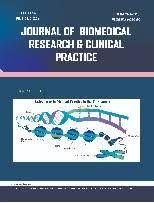Economic Burden and Payment Coping Mechanism of Patients withType 2 Diabetes Attending A Tertiary Health Facility Nnewi, AnambraState
Keywords:
Economic burden, Direct cost, Indirect cost, Payment coping mechanism, Diabetes MellitAbstract
The increasing prevalence rate of diabetes on the African continent may translate into severe economic burden. The
burden of diabetes implies significant direct and indirect consequences to patients. This study was conducted to
determine the Burden and Payment Coping Mechanisms among Patients with Type 2 Diabetic attending outpatient
department of a tertiary health care facility in Nnewi, Anambra State. A cross-sectional descriptive survey design
using convenient sampling technique and adapted questionnaires as instrument for data collection was employed
for the study. Data was analyzed using descriptive statistics and hypothesis tested using multiple linear regressionat
p<0.05. Findings showed that an average monthly direct cost of type 2 diabetes was N74, 974.31($254.01) and an
indirect cost of N72, 311.19($236.31). Major coping mechanisms utilized by respondents were, patients own
money (salary, earnings, savings), payment by family members, sale of lands, gifts from friends and neighbors and
skipping of appointments. Employment status, educational qualification and social class were significant
predictors of direct cost among patients with diabetics (P-values were 0.015, 0.010, and 0.013 respectively. The
economic burden on patients with diabetic is continuously on the increase, patients need financial assistance in
order to cope with the cost of their treatment. There is need for government and Non-Governmental agencies to
intervene by subsidizing the cost of diabetic management and treatment.





